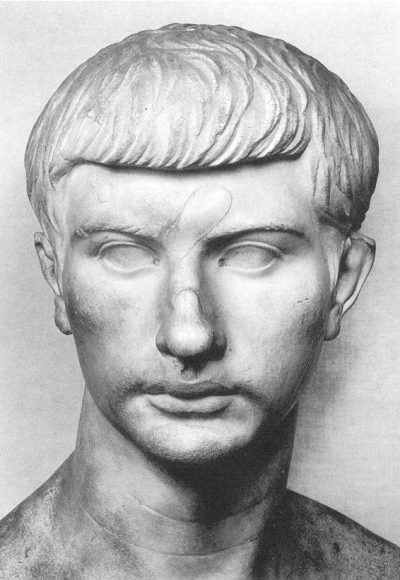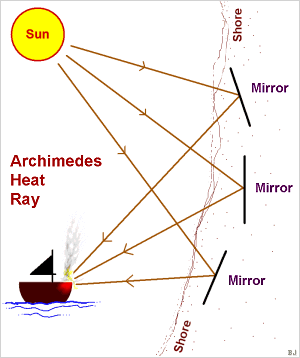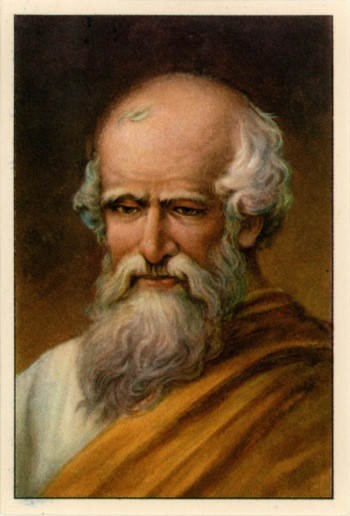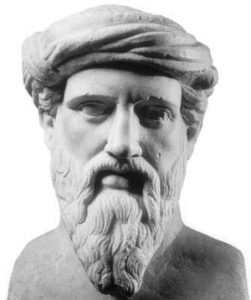An ancient mathematician from the coastal city of Syracuse, Archimedes is largely considered one of the most prolific and most brilliant scientific minds of antiquity.
 His work focused on, but was not limited to, applying the concept of infinitesimals and the method of exhaustion to prove a number of geometrical theorems.
His work focused on, but was not limited to, applying the concept of infinitesimals and the method of exhaustion to prove a number of geometrical theorems.
Notably, he was able to find the area of a circle, the surface area of a sphere, the area under a parabola, he accurately approximated the value of pi, and anticipated the creation of the study of calculus. He was, undoubtedly, a genius.
He might have also been a super villain. I don’t know. Maybe. I’m just saying.
That’s right dear reader. While Archimedes is largely remembered as a mathematician and a scientist, he was also a very crafty inventor. And it was reported that he amassed an array of some of the most unique and terrifying weapons of the ancient world. The Roman army might have had a superior army and an impressive navy, but the city of Syracuse had a “death ray” for crying out loud.
But now I’m getting ahead of myself. What were some of these ancient weapons of mass destruction? What exactly did Archimedes invent that would have put any Bond villain to shame?
Well, for starters, there were…
1. Long Range Catapults
All of the weapons that are mentioned in this article were said to have found use during the siege of  Syracuse in 214 BCE.
Syracuse in 214 BCE.
It was the height of the Second Punic War and it was feared by the Roman Republic that the Kingdom of Syracuse might ally with their enemy, the Carthaginian Empire.
To prevent such a disaster, the Roman General Marcus Claudius Marcellus was ordered to lay siege to the city of Syracuse, breach its walls, and place the civilization firmly under Roman control. It was a task that might have been significantly easier if it were not for the deadly weapons of Archimedes.
When the Roman offensive was underway many of the invading ships fell victim to the city’s artillery. Archimedes had developed new and improved catapults with longer range and a heaver payload. The catapults were so effective that they were said to have caused massive Roman casualties even while the ships were still at a great distance from the city walls.
“But Archimedes had constructed artillery which could cover a whole variety of ranges, so that while the attacking ships were still at a distance he scored so many hits with his catapults and stone-throwers that he was able to cause them severe damage and harass their approach.” -Polybius (Universal Histories)
As if that were not bad enough, Archimedes also had prepared…
2. The Scorpions
For the ships who managed to somehow avoid the deadly artillery, there was now the task of scaling the city walls, which were “by no means easy to climb”. For those soldiers who did attempt to scale the battlements, they would be forced to contend with Archimedes’ next array of death machines; a series of projectile weapons known as “the scorpions”.

It was said that across the city wall, there were a series of holes that had been drilled through. These loopholes within the walls were said to have the breadth of a palms width. Behind these peepholes and within the city walls were stationed a number of archers with rows of the so-called “scorpions”.
A smaller catapult, or possibly a very large crossbow, the weapon discharged iron darts at the invading mariners. Deadly and impossible to counterattack, the projectile weapon would be the woe of General Marcellus. In the words of Polybius, the scorpion “put many mariners out of action”.
And if the ships still managed to out maneuver the long range artillery and the deadly “scorpions”, they still had to contend with…
3. The Claw of Archimedes
Sometimes referred to as “The Iron Hand” or “The Sinker of Ships”, this weapon was said to have been a massive grappling hook. It was said to have been dropped from the top of the city fortifications onto an enemy ship. From there, the claw would be lifted back up, bringing the vessel and the entire crew with it. The ship would be dashed against the rocks or

simply capsized. The crew, weighted down by heavy armor, might have sunk beneath the waves and drowned.
The destruction that was unleaded by Archimedes claw was described by Plutarch when he writes…
“A ship was frequently lifted up to a great height in the air (a dreadful thing to behold), and was rolled to and fro, and kept swinging, until the mariners were all thrown out, when at length it was dashed against the rocks, or let fall.” -Plutarch (Parallel Lives:Marcellus)
I know what you are thinking. There is no way, right? Well, as it just so happens there is so a way. While this seems like a weapon that would have been impossible for ancient engineers to construct, the plausibility of the weapon was tested in 2005 by The Discovery Chanel in their special Super Weapons of the Ancient World.
Okay, so even if a ship could get past the artillery, dodge the deadly scorpions, and then not fall victim to the claw of Archimedes, they would still have to contend with an even deadlier weapon.
4. Archimedes’ Death Ray
Okay, truth be told, it probably wasn’t called a “death ray” in 218 BCE. However, it amounts to the same thing.
It is reported that by using a number of highly polished bronze or copper shields, the soldiers of Syracuse were able to redirect and focus the light of the sun onto enemy ships. Supposedly, the ships would burst into flames in a matter of seconds.

“At last in an incredible manner he burned up the whole Roman fleet. For by tilting a kind of mirror toward the sun he concentrated the sun’s beam upon it; and owing to the thickness and smoothness of the mirror he ignited the air from this beam and kindled a great flame, the whole of which he directed upon the ships that lay at anchor in the path of the fire, until he consumed them all.” -Dio Cassius (Roman History)
Okay, you may have put your doubts aside to accept the claw of Archimedes, but surely the creation of a deadly heat ray in 200 BCE is pure myth, right?
The existence of such a weapon has been a matter of some debate over the centuries. Several scientists have attempted to recreate the machine with varying success.
In 1973 a Greek scientist by the name of Ioannis Sakkas carried out his own experiment in Skaramagas naval base outside of Athens. By using seventy copper coated mirrors, Sakkas redirected the suns rays toward a mock plywood ship some 200 feet away. After only a few seconds, the model boat burst into flames, proving that such a heat ray was, in fact, plausible.
It might have looked something like this. These weapons were said to have been so effective that the Roman army was eventually forced to call of their general offensive of the city. Having no real way to contend with the weapons of Archimedes, General Marcellus decided to take the city by means of siege.
By cutting off all trade routes in and out of the city, the Romans forced the city of Syracuse to consume all of their resources until they were eventually defeated by starvation.
The invading army stormed the city and took it with ease. It was said that General Marcellus had ordered that Archimedes be spared. However, such an order would not be followed.

The story goes that a Roman soldier came upon Archimedes in his home where the scientist was busying himself with his work. Flustered that somebody had interrupted him, Archimedes ordered the soldier to leave. The Roman either did not recognize Archimedes or realized that he was the man responsible for hundreds of Roman deaths. Either way, the story ends the same. Archimedes, now in his late eighties, was slain in his workshop by the invaders.
While all of Archimedes’ weapons are impressive, it is the heat ray more than any other that captures the imagination and makes one wonder whether Archimedes might have spent his evenings sitting in a war room somewhere, stroking a cat and secretly plotting world domination.
And if you think I am going too far with this whole Archimedes-could-have-been-a-Bond-villain thing, then I’m just going to point out that the James Bond franchise liked the idea of a heat ray so much that they actually created a movie where the main antagonist had, you guessed it, a heat ray. The film was “Die Another Day”. Go watch it and tell me that I’m wrong.
Despite my very humorous observations, there is absolutely no evidence that Archimedes ever had any intention to use his weapons for any other means than to protect his home of Syracuse. An inventor, a mathematician, a brilliant scientist, Archimedes is many things. However, I suppose we will have to conclude that he probably was not a super villain.
Probably…
 His work focused on, but was not limited to, applying the concept of infinitesimals and the method of exhaustion to prove a number of geometrical theorems.
His work focused on, but was not limited to, applying the concept of infinitesimals and the method of exhaustion to prove a number of geometrical theorems. Syracuse in 214 BCE.
Syracuse in 214 BCE. 
 simply capsized. The crew, weighted down by heavy armor, might have sunk beneath the waves and drowned.
simply capsized. The crew, weighted down by heavy armor, might have sunk beneath the waves and drowned.












